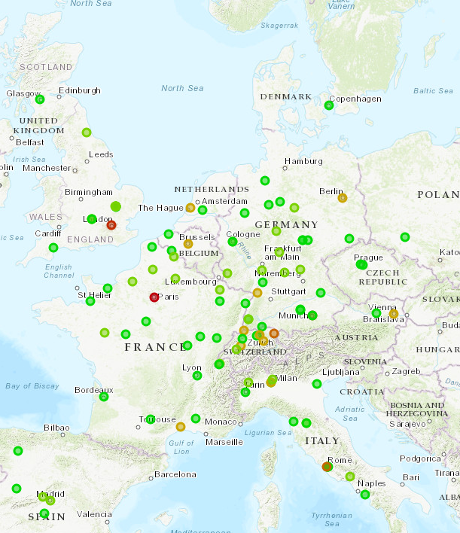Computus manuscripts and where to find them
An interactive map of computus manuscripts by place of preservation.
A poor screen shot:
From the about page:
Welcome to the bèta version of Computus.lat, an online platform for teaching and research in studies of the medieval science of computus. Computus.lat consists of a catalogue of computistical manuscripts and computistical objects, a bibliography, and a number of resources (such as a Mirador-viewer and data visualizations).
Follow @computuslat on Twitter for updates.
Kind regards,
Thom Snijders
Over 500 manuscripts online!
Oh, Computus:
Computus in its simplest definition is the art of ascertaining time by the course of the sun and the moon. This art could be and was a theoretical science, such as that explored by Johannes of Sacrobosco in his De sphera–a science based on arithmetical calculations and astronomical measurements derived from use of the astrolabe or, increasingly by the end of the 13th century, the solar quadrant. In the context of the present exhibit, however, computus is understood mainly as the practical application of these calculations. To reckon time in the broadest sense and to determine the date of Easter became one and the same effort. And for most people, understanding the problem of correct alignment of solar, lunar, yearly and weekly cycles to arrive at the date of Easter was simply reduced to a question of “when?” rather than “why?”. The result was a profusion of calculation formulae, charts and memory devices.
Accompanying these handy mechanisms for determining the date of Easter were many other bits of calendrical information that faith, prejudice and experience leveled to the same degree of acceptance and necessity: the lucky and the unlucky days for travel or for eating goose; the prognostications of rain or wind; the times for bloodletting; the signs of the zodiac; the phases of the moon; the number of hours of sunshine in a given day; the feasts of the saints; the Sundays in a perpetual calendar.
…
Take heed of the line: “The result was a profusion of calculation formulae, charts and memory devices.” (emphasis added)
And you think we have trouble with daylight savings time and time zones. 😉
Pass this along to manuscript scholars, liturgy buffs, historians, anyone interested in out diverse religious history.
